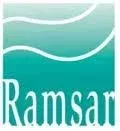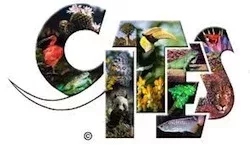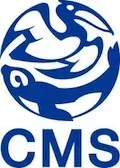Several multilateral environmental agreements (MEAs), programmes, partnerships and networks are relevant to the protection and conservation of coral reefs. In May 2003, a brochure produced by UNEP’s Coral Reef Unit in collaboration with the WWF Coral Reefs Advocacy Initiative summarized area of work for these various programmes, agreements, and partnerships: how they relate to coral reefs, as well as current and future activities. Below is a summary of how some of the major MEAs relate to coral reefs. A list of decisions/recommendations on coral reefs and/or ICRI emanating from these bodies is available here.

Also known as the Biodiversity Convention, the CBD is an international legally binding convention which aims to lead the development of national strategies for the conservation and sustainable use of biodiversity, including coral reefs. It was finalised at the 1992 Earth Summit and is known as one of the ‘Rio Conventions’. Its Secretariat is based in Montreal, Canada.
ICRI has been a long-term partner to the Secretariat of the CBD, and ICRI’s formation was announced at the inaugural Conference of the Parties to the CBD, on 7th December 1994. ICRI has continued to support CBD Parties over the year’s including developing a recommendation to the Post-2020 Global Biodiversity Framework (GBF) to ensure the appropriate inclusion of coral reef ecosystems, and more recently the release of “A guide for Integrating coral reefs and associated ecosystems into National Biodiversity Strategies and Action Plans (NBSAPs)”.
The Convention’s governing body is its Conference of the Parties (COP), which congregates governments that have ratified the treaty. COPs can advance implementation of the Convention through decisions, including on coral reefs. It also has a key role in supporting the work of the United Nations General Assembly as it pertains to marine biological diversity.
The Convention has established the Subsidiary Body on Scientific, Technical and Technological Advice (SBSTTA), which is committee, composed of experts from member governments. It plays a key role in making recommendations to the COP on scientific and technical issues, including on coral reefs. ICRI regularly provides input to SBSTTA meetings.
2010 was the International Year of the Reef of Biodiversity. The tenth meeting of the Conference of the Parties (COP 10) held in Nagoya, Japan, in October 2010 ushered in a new era of biodiversity conservation. The 193 Parties to the Convention on Biological Diversity and their partners rose to the challenge of reversing biodiversity loss, which is occurring at an unprecedented rate—up to 1000 times the natural rate of extinction—by adopting a new 10-year Strategic Plan (2010-2020) and Aichi Biodiversity Targets to guide international and national efforts to safeguard biodiversity.
COP 10 also created the Sustainable Ocean Initiative (SOI), a global platform which aims to enhance capacity to achieve the Aichi Biodiversity targets related to marine and coastal biodiversity.
In December 2022, the Kunming-Montreal Global Biodiversity Framework (GBF) was adopted during the fifteenth meeting of the Conference of the Parties (COP 15) following a four year consultation and negotiation process. This historic Framework, which supports the achievement of the Sustainable Development Goals and builds on the Convention’s previous Strategic Plans, sets out an ambitious pathway to reach the global vision of a world living in harmony with nature by 2050. Among the Framework’s key elements are 4 goals for 2050 and 23 targets for 2030.
The United Nations Commission on Sustainable Development (CSD) was established by the UN General Assembly in December 1992 to ensure effective follow-up of United Nations Conference on Environment and Development (UNCED), also known as the Earth Summit (Rio 1992). ICRI was formally announced at a high level segment of the Intersessional Meeting of the U.N. Commission on Sustainable Development a few years later, in April 1995.

At its 26th General Meeting (December 2011), ICRI adopted a resolution on the United Nations Conference on Sustainable Development that encouraged ICRI members to support the inclusion of references to the conservation and sustainable management of all coral reefs, and their importance to sustainable development in the final outcome document of the United Nations Conference on Sustainable Development (UNCSD). The United Nations Conference on Sustainable Development (Rio+20) was held in Rio de Janeiro on 20-22 June 2012. Some of the outcomes included:
- An outcome document entitled: ‘The Future We Want’ which had a specific section on ‘Oceans and the Sea’. Paragraph 176 .of that document makes specific mention of coral reefs; reaffirms the recognition of their economic, social and environmental values; and “supports international cooperation with a view to conserving coral reef and mangrove ecosystems’ – which is what ICRI is all about!
- The convening of a Third International Conference on SIDS in 2014, where it is anticipated that coral reef and associated ecosystems will be the object of focused discussions
- The replacement of the Commission on Sustainable Development by a ‘high level political forum’ for sustainable development
- The strengthening of the United Nations Environment Program (UNEP), a long-time and active player in ICRI
- The securing of over 700 voluntary commitments to fund actions towards sustainable development and form new partnerships, including some relevant to coral reefs such as :
-
- the Global Partnership for Oceans (led by the World Bank)
- the Assessment and Promotion of Progress in the Implementation of the 1992, 2002, and 2012 Global Commitments On Oceans, Coasts, and Small Island Developing States
- the Sustainable Maritime Development Initiative (led by the International Maritime Organisation and the shipping industry)
- the Marine Litter Initiative.
-
The United Nations Environment Programme (UNEP), established in 1972, is the voice for the environment within the United Nations system. Its headquarters are in Nairobi, Kenya and it also has 6 regional offices in various countries. It is governed by the UN Environment Assembly of UNEP (formerly UNEP Governing Council) since February 2013, and steered by the Committee of Permanent Representatives (CPR) which now meets annually.
UNEP has been an active player in ICRI since its inception. UNEP established a Coral Reef Unit (CRU) in 2000 with an original mandate to oversee the funding of the International Coral Reef Action Network (ICRAN), a former Operational Network of ICRI. In 2011, the CRU was moved from Cambridge, UK to Bangkok, Thailand. The CRU is now leading the Coral Reef Partnership which delivers on ICRI’s Call to Action and Framework for Action by working in partnership with the UNEP Regional Seas Programme and other institutions to support regional and national policies on coral reefs; develop demonstration projects and provide capacity building and networking opportunities.
In 2020, a new, first of its kind fund to protect coral reefs was officially launched on the sidelines of the 75th Session of the UN General Assembly, with a coalition of partners convening to mobilise resources to make coral reefs more resilient. The Global Fund for Coral Reefs seeks to raise and invest USD $500 million in coral reef conservation over the next 10 years. The Fund, a finance instrument that blends private and public funding, will also support businesses and finance mechanisms that improve the health and sustainability of coral reefs and associated ecosystems while empowering local communities and enterprises.
The UNEP Regional Seas Programme is UNEP’s most important regional mechanism for conservation of the marine and coastal environment since its establishment in 1974. Addressing marine pollution and degradation of oceans and coastal areas among countries sharing common bodies of water with a demonstrated value of a regional approach to environmental action. The Regional Seas Programme is an action-oriented Programme that implements region-specific activities, bringing together stakeholders including governments, scientific communities, civil societies, local communities and indigenous peoples.
The Programme operates in 18 regions, with most regions adopting a regional action plan underpinned by a legal framework in the form of a regional convention with associated protocols on specific issues. Commonly, they are referred to as Regional Seas Conventions and Action Plans (RSCAPs). UNEP provides overall coordination and facilitation and in so doing connects the programme to the United Nations Environment Assembly (UNEA).
Coral reefs exist in 10 out of the 18 UNEP regional seas areas, whilst six regional seas are members of ICRI:
- Coordinating Body on the Seas of East Asia (COBSEA)
- Regional Organization for the Conservation of the Environment of the Red Sea and Gulf of Aden (PERSGA)
- Secretariat of the Pacific Regional Environment Programme (SPREP)
- South Asia Co-operative Environment Programme (SACEP)
- The Nairobi Convention
- UNEP Caribbean Environment Programme (CEP)
In addition, the Global Coral Reef Monitoring Network (GCRMN), an operational network of ICRI, works closely with seven of the UNEP regional seas, including CEP, PERSGA, ROPME, SPREP, COBSEA, SACEP and the Nairobi Convention, they form the engine rooms of the GCRMN, with established relationships and reporting mechanisms to national stakeholders.
The UNESCO is a specialised agency of the United Nations which aims to contribute to peace and security by creating the conditions for dialogue among civilizations, cultures and peoples, through edication, science and culture. Several activities of UNESCO are relevant to the protection of coral reefs.
- World Heritage Convention. The Convention concerning the Protection of the World Cultural and Natural Heritage, also known as World Heritage Convention, was adopted by UNESCO in 1972. Its Secretariat is based in Paris, France. The objective of the convention is to encourage the identification, protection and preservation of cultural and natural heritage around the world considered to be of outstanding universal value. A World Heritage Committee maintains the list of World Heritage sites. Under this Convention, the World Heritage Marine Programme, launched in 2005, works specifically to establish effective conservation of existing and potential World Heritage marine areas to make sure they will be maintained and thrive for generations to come.
- UNESCO’s Intergovernmental Oceanographic Commission (IOC). IOC was established in 1961. It is composed of Members States, an Assembly, an Executive Council and a secretariat. It is the UN body for ocean science, ocean observatories, ocean data and information exchange, and ocea servies suh as the Tsunami warning system. The IOC was initially closely involved in ICRI, particularly its data arm the Global Coral Reef Monitoring Network (GCRMN). Its participation in ICRI has waned over the past few years, but is still occasionally participates in ICRI through UNESCO.
- Man and the Biosphere Programme (MAB). The Man and the Biosphere (MAB) Programme was established in 1971 is an Intergovernmental Scientific Programme aiming to set a scientific basis for the improvement of the relationships between people and their environment globally. It is best known for its World Network of Biosphere Reserves, created in 1977. The Network allows for reserves echanges knowledge and experiences with more Biosphere Reserves having been declared in more than 100 countries all across the world. Some of these Biosphere Reserves include coral reefs

The Ramsar Convention or (Convention on Wetlands of International Importance, especially as Waterfowl Habitat), signed in Iran in 1971, is an international treaty for the conservation and sustainable use of wetlands. Its Secretariat is based in Gland, Switzerland.
Under the Convention, each party has to designate at least one wetland site for includsion in the List of Wetlands of International Importance; with reference to specific criteria. These criteria are intentionally board and include not only coastal zones but island islands or bodies of marine water. The Ramsar Convention has its own classification system to categorise wetlands types, one of which is ‘coral reefs’. There are therefore a large number of ‘Ramsar sites’ around the world which include coral reefs, including in countries which are also ICRI members such as Australia, Brazil, Cuba, France, the Philippines, South Africa, Thailand, and the United Kingdom.

CITES (the Convention on International Trade in Endangered Species of Wild Fauna and Flora, also known as the Washington Convention) was adopted in 193 and entered into force in 1975, Its aims is to ensure that international trade in endangered species (including coral reefs) does not threaten their survival in the wild. CITES works by implementing controls on the international trade of selected species; with import, export and re-export and introduction being managed through a licensing system. ICRI has provided input to CITES as regards to coral reef and associated ecosystems species listing:

The Convention on the Conservation of Migratory Species of Wild Animals (also known as CMS or the Bonn Convention) is an intergovernmental treaty which aims to conserve terrestrial, marine and avian migratory species throughout their range. The Convention was signed in 1979 and entered into force in 1983. Appendix 1 of the Convention lists migratory species threatened with extinction, which Parties have an obligation to protect; Appendix II list species that would significantly benefit from international cooperation; a number of Agreements and Memoranda of Understanding (MoUs) have been concluded under the auspices of CMS.Many of the species the Convention is striving to protect are linked to coral reefs and associated ecosystems, including turtles, dugongs, cetaceans, sharks and seabirds. Relevant agreements and MoUs include:
-
- African-Eurasian Migratory Waterbirds (AEWA)
- Albatrosses and Petrels (ACAP)
- Dugong MoU
- Marine Turtles of the Indian Ocean and South-East Asia (IOSEA)
- Pacific Islands Cetaceans MoU
- Migratory Sharks MoU
- Western African Aquatic Mammals MoU (Small Cetaceans and Manatees).